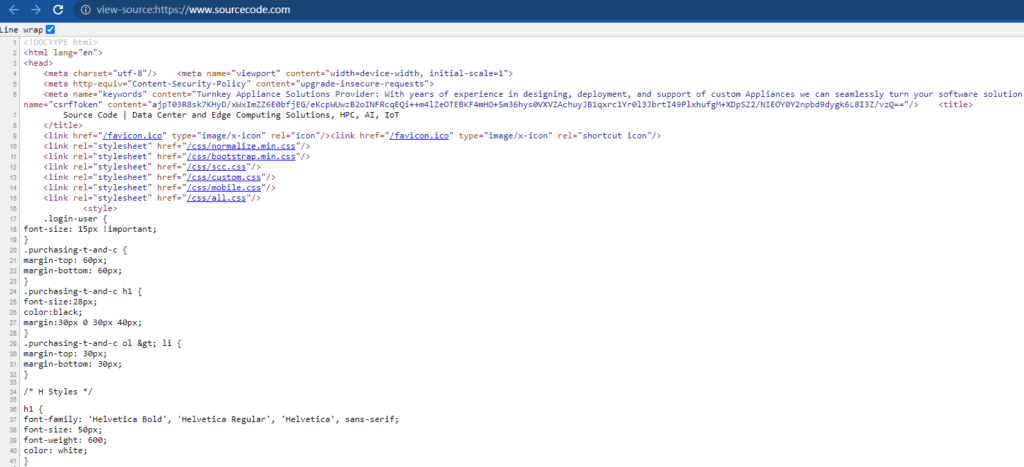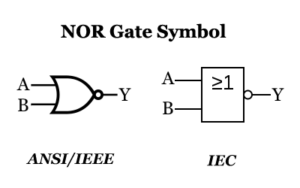Are you just getting started with learning how to code? If so, there is a lot of new information to take in and it can be overwhelming! It is important to understand the differences between machine code, assembly and source code. These three levels of programming languages are used to communicate with computers, but each has a unique purpose and function. In this article, we will break down the differences between machine code, assembly and source code, and explain in an easy-to-understand way for beginners. With a better understanding of each of these layers of programming languages, you will have the knowledge to better tackle the world of coding.
What Is Machine Code?
Machine code is a set of instructions that can be executed directly by a computer’s central processing unit (CPU). It is used to control the basic functions of a computer, such as input/output, memory management, interrupt handling, and other fundamental operations. Furthermore, it is the lowest level of programming language and consists of binary digits (1s and 0s) or hexadecimal instructions.
Here’s an example of machine language in binary:
0000 0001 0010 0011 ; Load the value 0x12 into the accumulator
0001 0100 0010 0000 ; Load the value at memory address 0x20 into the X register
0001 0101 0010 0000 ; Compare the value in the accumulator to the value at memory address 0x20
0001 0101 0010 1000 ; If the values are equal, jump to memory address 0x28
0001 0011 0010 0001 ; Load the value at memory address 0x21 into the accumulator
0001 1000 1100 1000 ; Add the value 0xC8 to the accumulator and store the result at memory address 0xC8
1111 0000 0110 0000 ; End the program
Note that this is just one possible encoding of machine language instructions and it depends on the specific processor architecture and instruction set. Additionally, this code may not run correctly on modern systems, as it was written for a specific type of processor and memory architecture that may no longer be in use.
What Is Assembly Code?
The assembly code, also called assembly language or symbolic language, is a machine-oriented programming language. It’s readable for programmer compared with machine language.
Here’s an example of x86 assembly code that implements the program ‘sum’: which calculates the sum of two numbers:
section .data
num1 db 12
num2 db 15
section .bss
result resb 4
section .text
global _start
_start:
; load values into registers
mov al, num1
mov bl, num2
; add the values
add al, bl
; store the result
mov [result], al
; exit program
mov eax, 1
xor ebx, ebx
int 0x80
The program uses the following x86 instructions:
- ‘mov’: moves a value into a register
- ‘add’: adds two values
- ‘xor’: exclusive ors two values
- ‘int’: triggers a software interrupt to transfer control to an operating system routine
The ‘section’ directives define different sections in the program, such as the data section that holds the values of ‘num1’ and ‘num2’, the bss section that reserves memory for the result, and the text section that holds the actual code.
What Is Source Code?
Source code, also known as source program, is a human-readable and modifiable computer language. Source code is the usual development code of our technicians. It is usually implemented in C language, JAVA language, PYTHON language and other tools. Among of them, the C language is most popular. An simple example is the website’s source code, you can see it by selecting “View Page Source.”
Advantages and Disadvantages of Each Code
There are both advantages and disadvantages for these diffrent languages:
Advantages of Machine Code:
- Machine code is the most efficient form of computer language as it can be directly executed by the processor, allowing for faster processing and execution of instructions. This makes it ideal for use in systems that require high performance, such as embedded systems.
- Machine code is highly portable, meaning that it can be used on any type of processor without needing to be recompiled. This makes it ideal for creating programs that can be run on multiple platforms.
- It is also very reliable since it is not subject to any errors caused by the compiler or interpreter.
Disadvantages of Machine Code:
- Machine code is difficult to read and understand. This makes it difficult for software developers to debug and troubleshoot issues with their programs.
- It requires a significant amount of time and effort to write and debug machine code, as well as to optimize it for better performance.
- It is not suitable for applications that require a lot of user interaction since it is not easily readable by humans.
Advantages of Assembly Code:
- Assembly code is much faster than higher-level languages like C and Java, as it is closer to machine code and thus easier for the processor to understand and execute.
- It is more flexible than higher level languages and allows for a greater degree of control over memory allocation, data structures, and execution order.
- Assembly code is also much more space efficient, as it requires fewer lines of code to accomplish the same task as higher-level languages.
- Assembly code can be used to create optimized programs that are faster and more efficient than those written in higher level languages.
Disadvantages of Assembly Code:
- Assembly code is difficult to write, debug, and maintain, since it requires an intimate knowledge of the underlying hardware and the instruction set of the processor.
- Assembly code is not portable, as it is tailored to the specific instruction set of the processor on which it is being executed.
- It is much more prone to errors than higher level languages, as even a small mistake can lead to unexpected results.
- Since Assembly code is very low-level, it is less intuitive and harder to read than higher level languages, making it difficult for new programmers to learn.
Advantages of Source Code:
- Source code provides a means for developers to create applications more efficiently, as it allows for the reuse of code across different projects. This can reduce development times and costs, depending on the complexity of the project.
- Source code also provides transparency to users. Users can view the source code of an application and modify or add to it if they need to. This allows users to customize their experience with an application according to their preferences and needs.
- Source code also enables third-party developers to create compatible software that works with existing applications. For example, developers can create plugins or other software that work with a particular application which helps to extend its capabilities.
- Source code can also be used as a form of documentation for a project. Developers can easily review the source code to understand how a project works and to determine the best way to make changes or modifications.
Disadvantages of Source Code:
- Source code is written in programming languages, which require a certain level of expertise to understand and use. Therefore, it can be difficult for non-technical people to modify or debug source code.
- Source code can also be difficult to maintain. If changes are made to the source code, these changes may affect other parts of the application, causing it to become unstable or not work as expected.
- Source code can also be prone to security vulnerabilities. As developers may not be aware of all possible security flaws, malicious actors can exploit these vulnerabilities and gain access to sensitive data or disrupt the system.
- Finally, source code may be subject to copyright laws.
Assembly vs Machine Code
Both assembly code and machine code have their own benefits and drawbacks.
Assembly code is a human-readable representation of machine code. It is typically much easier to read and write than machine code, making it more suitable for programming tasks. However, assembly code is also more difficult for computers to understand, and as a result, programs written in assembly code tend to be slower and require more memory than those written in machine code.
Machine code, on the other hand, is the native code understood by computers. It is more efficient and faster than assembly code, but is much harder for humans to read and write. As a result, most programming is done in high-level languages which are then compiled into machine code for execution.
Machine Code to Assembly
In recent years, due to the continuous optimization of product performance by customers, more and more customers need to disassemble machine code or even anti-C source code to modify and upgrade product functions. In essence, complete anti-C code is basically impossible to achieve. , but we can use the machine code to disassemble the operation, and then use the assembly code to perform the anti-C operation to obtain a pseudo-C code, but the workload is huge, so the general cost is high. The source code obtained in this way is also readable by technical engineers, and it is much simpler to modify and upgrade the program if necessary. At present, we have done many related cases for our customers and have rich experience and strength.






